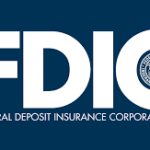How does the FDIC work?
The Federal Deposit Insurance Corporation (FDIC) is an independent U.S. government agency that protects depositors by insuring their deposits in banks and savings institutions. Here’s how it works:
-
Insurance for Depositors:
The FDIC insures individual bank accounts up to $250,000 per depositor, per bank, for each account ownership category (e.g., individual, joint accounts). This means if your bank were to fail, the FDIC guarantees you’ll get back up to $250,000 of your deposits, reducing the risk of losing money. -
Covered Accounts:
The FDIC covers various types of accounts, including:- Checking accounts
- Savings accounts
- Money market deposit accounts
- Certificates of deposit (CDs)
However, it does not insure:
- Stocks, bonds, or mutual funds
- Life insurance policies
- Annuities
- Municipal securities
-
Bank Supervision:
In addition to insuring deposits, the FDIC supervises banks and savings institutions to ensure their safety and soundness. This includes monitoring and examining banks’ financial health to prevent failures and reduce risks in the banking system. -
Handling Bank Failures:
When a bank fails, the FDIC steps in to either sell the bank’s assets to another financial institution or liquidate its assets. Deposit holders generally have access to their insured funds within a few days, either by transferring accounts to another bank or receiving a check. -
Funding:
The FDIC is not funded by taxpayers. Instead, it is funded through premiums that banks and savings institutions pay for deposit insurance coverage and from earnings on investments in U.S. Treasury securities.
By providing insurance and maintaining confidence in the financial system, the FDIC plays a key role in maintaining stability and protecting consumers in the U.S. banking industry.

 Next Post
Next Post